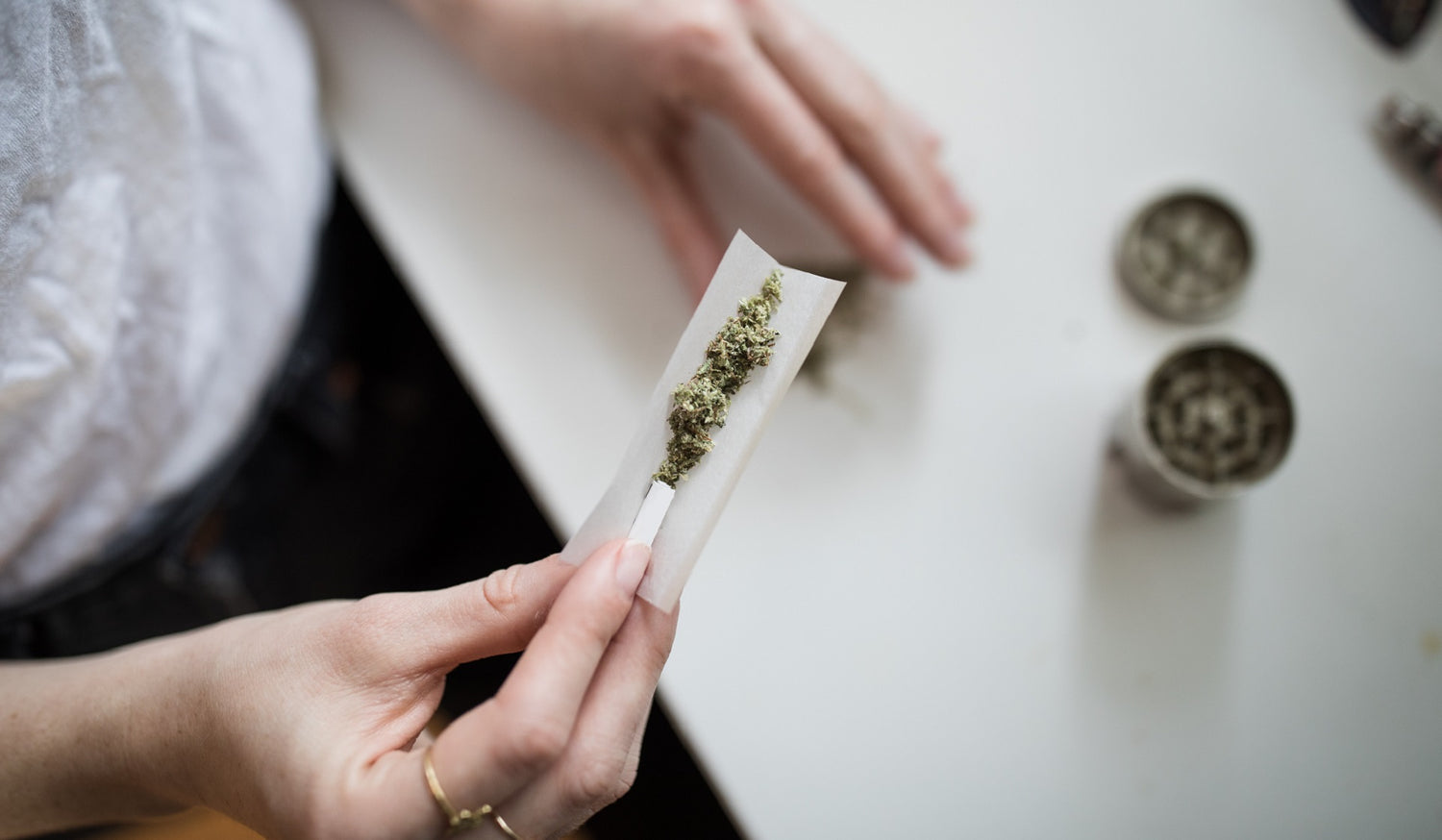Rolling papers can make or break a great blunt. For those smokers who find that bongs and pipes just aren't for them, quality rolling papers are a necessity. And, just as you can find thousands of different pipes, you will also come across a wide variety of different rolling papers. Colored, transparent, or flavored are just a few of the main features of these elements.
However, what you certainly want to know is what rolling papers are made of. After all, you are basically inhaling some of the smoke produced by them. If you want to find out what kind of paper suits you better, whichever is superior and healthier, this article will shed some light on the issue. We assure you next time you will carefully pick your rolling papers.
What Are Rolling Papers Made Of
When you are defending the point of using cannabis for medicine or general wellness, it is important to put a lot of thought into what kind of rolling papers you are using to smoke it. History tells us that there have been a wide variety of materials that smokers have used over the years to roll cigarettes or joints.
You might wonder now if you are using toxic or safe rolling papers. To figure this out, we first need to go over the most common types of rolling paper materials that have been used and those that are still available on the market.
Rice Rolling Papers
Rice fiber is one of the most commonly used materials to make rolling papers. These are a popular choice for their thinness and lack of flavor. Moreover, they tend to burn slower and are one of the most sustainable options.
Rice was one of the first materials to be used in the mass-production of rolling papers. These often contain additives such as flax or sugar. In terms of rolling difficulty, these papers are the most complicated, especially for beginners. Additionally, they need to be relit often when smoking.
Hemp Rolling Papers
Hemp-based papers are made of dried cannabis sativa pulp. They have gained ground and fame in recent years not only because of its fine texture and mild taste, but also because it represents one of the healthiest options when talking about rolling papers due to being all-natural and organic. Hemp burns at a moderate rate and has moderate rolling difficulty. Furthermore, it is an ultra-sustainable crop, which makes it not only a great choice for you but for the environment as well. Check out HØJ’s HAMP rolling papers.
Wood Pulp Rolling Papers
Wood pulp papers were commonly used during the early days of rolling papers. It was frequently the most popular choice for beginners because they are usually easiest to roll due to its thickness.
When talking about smokability, wood pulp stays lit most effectively, but it burns very quickly and issues the biggest carbon footprint. Over the years, they have become less claimed due to their harsh taste that masks cannabis flavor. Furthermore, wood pulp is often bleached with chemicals to give it a lighter appearance. When you burn them, you inhale all the toxins produced, added to the basic carcinogens released.
Flax Rolling Papers
Flax rolling papers are probably the safest types of materials. Thin like rice and easy to roll like wood pulp or hemp, flax rolled joints have less combustion, meaning less smoke, more good stuff. Although they aren't as popular as they used to be, you can still find plenty of brands on the market that use this easy-to-make natural substance.
What Are Clear Rolling Papers Made Of
Besides the common materials described above, you will now find new and innovative rolling papers. For instance, clear rolling papers are made from cellophane. You might be thinking of plastic wrap, but this natural 100% biodegradable cellophane is made of a specialized form of cellulose film predominantly coming from trees or cotton.
Clear papers make your spliffs look pretty cool, They are a great attention-getter because they compact around your cigarette as you are smoking without altering its taste, providing a very tight pull. Some smokers may like its slower combustion and the sweet taste that glicerin provides to these papers, but the truth is that burning glycerin does release a carcinogen called Acrolein.
There has been some controversy and rumors surrounding its use, due to a couple of brands claiming that this paper had healthier characteristics than white ones, which is not entirely true. As we all know, there are no healthy spliffs, and clear rolled joints are no exception. The process to make cellophane is actually a very chemical oriented method, the reason why when it is burned, a heavier and thicker smoke than usual is produced.
What Are Bambu Rolling Papers Made Of
Bambu rolling papers have been around for years as high quality rolling paper. These are famous for being vegan, GMO free, and unbleached. Its ultra-thin weight and smooth taste along with the plant’s long, durable fibers ensures a nice experience when smoking. Your joint will definitely deliver a slow, even-burning smoke.
Furthermore, they are made from the world’s most sustainable fiber–bamboo with no harsh fertilizers, pesticides or herbicides used during its growing process. It is responsibly harvested, leaving the roots in the ground to regrow. These easy-to-roll papers can accommodate a large amount of your favorite herbs making them not only a popular choice but also healthy among many. They will probably cost you a few more cents, but are definitely worth the investment.
Toxic Ingredients You Must Avoid
Before you choose a pack of rolling papers, you might consider this information. In order to control the smoking properties, industries add different chemicals to influence in every characteristic of each kind of paper. These are responsible for their permeability, color, and flavor. In addition, they regulate combustion and even the color of its ash.
Not all of the chemicals used to produce rolling papers are safe. The list below shows just a few of the substances you may find added to your favorite rolling papers:
-
Titanium oxide: Most rolling papers contain titanium oxide to make them burn longer. What people don’t know is that besides being toxic, it may be carcinogenic when inhaled.
-
Chlorine bleach: In order to produce a whiter color, many manufacturers treat their rolling papers with this chemical. When you smoke it, this substance can cause serious breathing problems due to its high toxicity. Next time, choose unbleached rolling papers instead of white, wood pulp ones.
-
Calcium carbonate: This is a burn inhibitor that manufacturers use to make cigarettes and joints burn slow. Did you know that calcium carbonate is the scientific term for chalk? Definitely is a substance that you want to avoid smoking.
-
Potassium nitrate: This is another chemical compound that can affect you when inhaled. Blunts and flavored papers are notorious for containing potassium nitrate. Moreover, high levels of potassium nitrate can interfere with the blood’s ability to carry oxygen, causing headaches, fatigue and dizziness.
-
Artificial dyes: It is well known that artificial dyes are harmful to health. Keep this in mind when choosing rolling papers, making sure that any dyes used are all-natural and non-carcinogenic.


0 comments